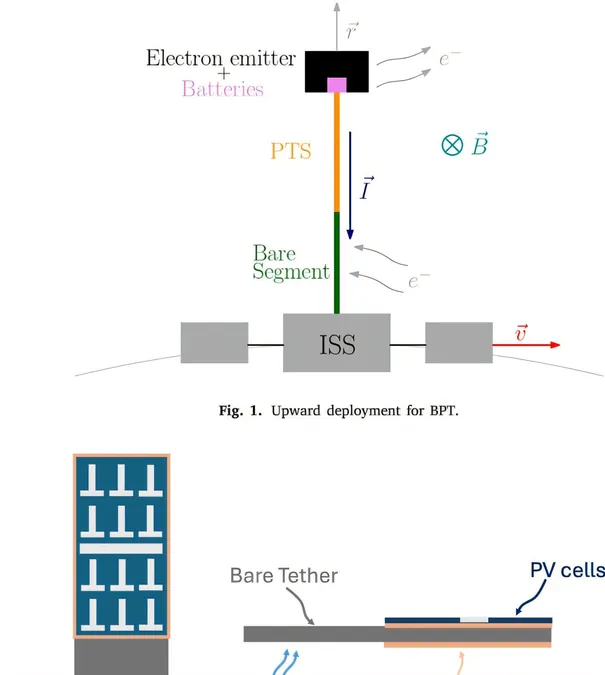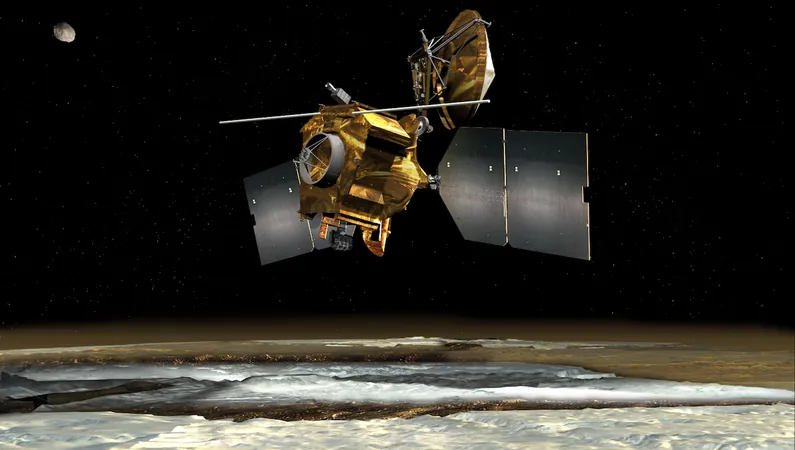
Revolutionary Solar-Powered Tether Could Change the Fate of the ISS!
2025-01-21
Author: Liam
The International Space Station (ISS) has been traversing the Earth’s orbit for over 25 years, but its position is gradually deteriorating. Despite being situated approximately 400 kilometers above the Earth—a height where the atmosphere is thin—there are still traces of atmospheric drag. This drag is slowly reducing the ISS's orbital velocity, leading to a decline in its altitude, and if left unaddressed, it could ultimately plunge back to Earth.
Traditionally, the ISS has relied on hundreds of tons of hydrazine rocket fuel for orbital maintenance, a costly and resource-intensive approach. However, a groundbreaking new concept presented by Giovanni Anese, a Ph.D. student from the University of Padua, and his research team might provide a more efficient and sustainable solution—a Bare Photovoltaic Tether (BPT).
This innovative idea builds on earlier designs known as electrodynamic tethers (EDTs), integrating solar panels along the tether’s length. The fundamental principle behind the BPT is simple yet brilliant: by deploying a conductive boom into the Earth’s magnetic field, the natural magnetic forces can be used to generate thrust. Picture it like a giant umbrella battling against the wind—here, the magnetic field serves as the wind, helping to elevate the tether and maintain the ISS's orbit.
EDTs have been in the conceptual space since 1968, introduced by esteemed scientists at Harvard. They've even seen practical trials, such as the TSS-1R mission in 1996, where a 10-kilometer tether was successfully unfurled from the Space Shuttle Atlantis. Yet, despite their promise, EDTs have faced challenges, particularly concerning power requirements and the direction they must face for optimal performance.
Typically, for an EDT to provide effective stabilization, it would need to face downward toward Earth, linking closely with the ISS's power grid—a setup that interrupts docking pathways for incoming supply ships. In contrast, the BPT's solar panels could generate enough power independently, allowing for upward deployment. This could keep vital docking lanes clear while maintaining orbital integrity!
Through meticulous simulations using a software called FLEXSIM, Anese and his team discovered that a BPT measuring 15 kilometers, with a coverage of 97% solar panels on one side, could counteract the gradual 2 kilometers per month altitude loss experienced by the ISS. While a 15 km tether may sound extravagant, it's a feasible engineering feat, harking back to past achievements like the Atlantis experiment.
Though current solar panel technology presents challenges—like lower efficiency rates due to size and flexibility—the research indicates that the tether could still provide a staggering 8.3 kW of power. This is more than enough to reverse the slow decline in altitude.
However, there’s a ticking clock. The ISS is slated for decommissioning potentially as soon as 2031, raising questions about the implementation of the BPT system before it’s too late. Nevertheless, as discussions about future space infrastructure evolve, it's enticing to imagine that the next generation of orbital stations might capitalize on this revolutionary system from the start, saving a fortune in fuel and changing the landscape of space maintenance!
Could this transformative technology represent a new dawn for orbital facilities? Stay tuned as we continue to monitor developments in this fascinating chapter of space exploration!









 Brasil (PT)
Brasil (PT)
 Canada (EN)
Canada (EN)
 Chile (ES)
Chile (ES)
 Česko (CS)
Česko (CS)
 대한민국 (KO)
대한민국 (KO)
 España (ES)
España (ES)
 France (FR)
France (FR)
 Hong Kong (EN)
Hong Kong (EN)
 Italia (IT)
Italia (IT)
 日本 (JA)
日本 (JA)
 Magyarország (HU)
Magyarország (HU)
 Norge (NO)
Norge (NO)
 Polska (PL)
Polska (PL)
 Schweiz (DE)
Schweiz (DE)
 Singapore (EN)
Singapore (EN)
 Sverige (SV)
Sverige (SV)
 Suomi (FI)
Suomi (FI)
 Türkiye (TR)
Türkiye (TR)
 الإمارات العربية المتحدة (AR)
الإمارات العربية المتحدة (AR)